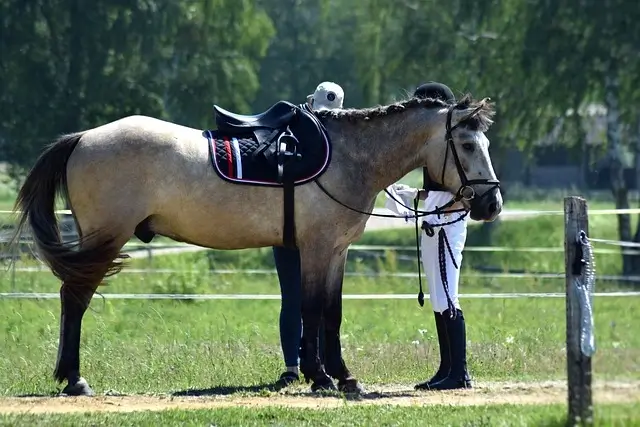- Horse Racing Background
- The present situation of horse racing
- Position of Horse racing in India
- Conclusion
Horse Racing Background
Horse racing is one of the oldest sports in the world, with a history that can be traced back to ancient civilizations like the Greeks, Romans, and Egyptians. It is a sport that involves horse riding by jockeys. Horse riding is carried out either for hobby or for competition purposes. When it is done for racing or competition, the goal of the race is to be the first to cross the finish line.
Modern horse racing has its roots in England in the 17th century, where it became popular among the elite class. The first recorded horse race in England took place in 1660. By the 18th century, horse racing had become a professional sport with its own rules and regulations.
In the United States, horse racing became popular in the 19th century. The first organized race has place in 1665 on Long Island, New York. Today, horse racing is a global sport, with major events taking place all over the world. Many races are populer including the Kentucky Derby in the United States, the Melbourne Cup in Australia, and the Royal Ascot in England.
Horse racing involves several different types of races, including flat racing, where horses run on a level surface. Another is jump racing, where horses navigate over obstacles such as hurdles or fences. Races range in distance from a few furlongs to several miles, and horses are classified according to age, sex, and racing ability.
In addition, Horse racing is also a significant industry, generating billions of dollars in revenue each year through breeding, training, and betting. However, the sport has also been criticized for its treatment of horses, particularly in cases of injury or overuse. As a result, many organizations have pushed for improved safety standards and ethical treatment of horses in the sport.
The Present Situation of Horse Racing
Horse racing continues to be a popular and lucrative sport around the world. Major races such as the Kentucky Derby and the Royal Ascot continue to draw large crowds and generate significant revenue.
However, the sport has faced several challenges in recent years. One of the biggest issues has been concerns over the welfare of the horses. There were several high-profile cases of horses suffering injuries or dying during races. This has lead to increased scrutiny of the sport and calls for better safety measures.
In response, many racing organizations have implemented new rules and regulations designed to protect the welfare of the horses. For example, some tracks have installed safer surfaces to reduce the risk of injury, and many races now require veterinary examinations before horses are allowed to compete.
Another issue that the horse racing industry has faced is the impact of the COVID-19 pandemic. Many races were canceled or postponed in 2020 and 2021, and some have taken place without spectators. This had a significant financial impact on the industry, with many tracks and horse owners experiencing losses.
Despite these challenges, the horse racing industry continues to evolve and adapt. New technologies and innovations, such as advanced training techniques and genetic testing, are helping to improve the performance and health of horses.
Additionally, efforts to improve the transparency and fairness of the sport, such as stricter drug testing protocolsare also made. These efforts are helping to build trust and confidence among fans and stakeholders.
Position of Horse Racing in India
Horse racing has a long history in India. Dating back to the colonial period when the British introduced the sport. Today, horse racing is a popular sport in India, with several racecourses located in major cities such as Mumbai, Bangalore, Kolkata, and Chennai.
The Indian horse racing industry is regulated by the Turf Authorities of India. The authority oversees the conduct of races, the licensing of trainers and jockeys, and the welfare of the horses.
The industry is also subject to various laws and regulations related to gambling and taxation.
One of the biggest horse racing events in India is the Indian Derby, which takes place annually in Mumbai. Itis considered one of the most prestigious races in the country. Other major races include the Indian Oaks, the Indian 1000 Guineas, and the Indian 2000 Guineas.
Despite the popularity of the sport, the horse racing industry in India has faced several challenges in recent years. One of the biggest issues has been the decline in attendance at races. It has been attributed to several factors such as competition from other forms of entertainment, changing demographics, and concerns over the welfare of the horses.
In addition, the industry has faced criticism over its links to gambling and concerns over transparency and fairness. Some critics have called for greater regulation and oversight of the industry to address these issues.
Despite these challenges, the horse racing industry in India continues to grow and flourish. Efforts are underway for improvements including the implementation of new safety measures and the development of better training techniques.
Additionally, new technologies and innovations, such as online betting platforms, are helping to attract a new generation of fans to the sport.
Conclusion
In conclusion, horse racing has a long and rich history in India, dating back to the colonial era. While the sport remains popular, it has faced several challenges in recent years, including declining attendance.Concerns are also there, over the welfare of the horses, and criticism over its links to gambling.

